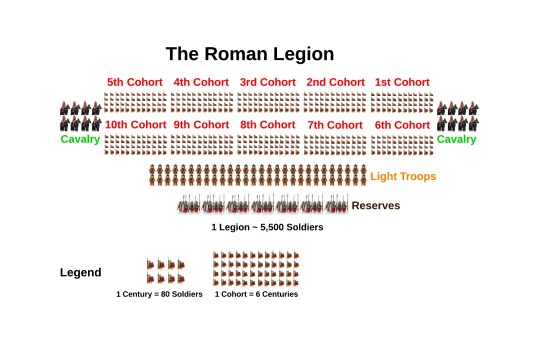I have used much of my own information here, but my cited works are taken exclusively from the following webpages:
Source 1: http://romans.etrusia.co.uk/roman_army_print
Source 2: http://faculty.vassar.edu/jolott/old_courses/republic1998/marius/index.htm
These two websites had a lot of good, well-cited information that made it easy to put the artifact together! The visual aspect isn't really my thing, but I hope all find it presentable and educational.
Source 1: http://romans.etrusia.co.uk/roman_army_print
Source 2: http://faculty.vassar.edu/jolott/old_courses/republic1998/marius/index.htm
These two websites had a lot of good, well-cited information that made it easy to put the artifact together! The visual aspect isn't really my thing, but I hope all find it presentable and educational.


 (Velites were famously recognizable for their wolf skin headware!)
(Velites were famously recognizable for their wolf skin headware!)  (A typical battle formation, courtesy of vassar.edu.)
(A typical battle formation, courtesy of vassar.edu.) (The Battle of Cannae was a horrific defeat for the Romans, ending with the near annihilation of their entire fighting force).
(The Battle of Cannae was a horrific defeat for the Romans, ending with the near annihilation of their entire fighting force).  (Roman soldiers on the move!)
(Roman soldiers on the move!) (In all its
glory.)
(In all its
glory.) (A visualization of the newly organized Legion)
(A visualization of the newly organized Legion) (We finish on a high note, with
Caesar leading his legions to glorious victory!)
(We finish on a high note, with
Caesar leading his legions to glorious victory!)